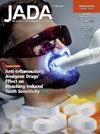Effectiveness of low-level diode laser in the management of complications after third-molar surgical extraction
IF 3.1
2区 医学
Q1 DENTISTRY, ORAL SURGERY & MEDICINE
引用次数: 0
Abstract
Background
The aim of this study was to evaluate the effects of low-level laser therapy (LLLT) in reducing postoperative pain, swelling, and trismus after extraction of third molars.
Types of Studies Reviewed
The authors conducted a literature search without restriction on dates or language in the following databases: PubMed (MEDLINE), Cochrane Central Register of Controlled Trials database, Web of Science, and Scopus. They selected only split-mouth randomized clinical trials investigating the use of LLLT and comparing the effectiveness with a placebo group.
Results
The authors identified 803 references and evaluated 131 articles in full text. After this analysis, the authors included 18 articles in this study. The results of the meta-analysis suggest potential efficacy of LLLT in the reduction of postoperative pain (standardized mean difference [SMD], −1.11; 95% CI, −1.63 to −0.58; P < .001) and swelling (SMD, −0.50; 95% CI, −0.88 to −0.11; P = .01) at 48 hours and trismus (SMD, 0.35; 95% CI, 0.16 to 0.53; P = .002) at 7 days after surgery.
Practical Implications
Evidence shows low certainty to indicate the use of LLLT after mandibular third-molar extraction. Future studies with improved methodology are needed to establish its efficacy in reducing pain, swelling, and trismus.
求助全文
约1分钟内获得全文
求助全文
来源期刊

Journal of the American Dental Association
医学-牙科与口腔外科
CiteScore
5.30
自引率
10.30%
发文量
221
审稿时长
34 days
期刊介绍:
There is not a single source or solution to help dentists in their quest for lifelong learning, improving dental practice, and dental well-being. JADA+, along with The Journal of the American Dental Association, is striving to do just that, bringing together practical content covering dentistry topics and procedures to help dentists—both general dentists and specialists—provide better patient care and improve oral health and well-being. This is a work in progress; as we add more content, covering more topics of interest, it will continue to expand, becoming an ever-more essential source of oral health knowledge.
 求助内容:
求助内容: 应助结果提醒方式:
应助结果提醒方式:


